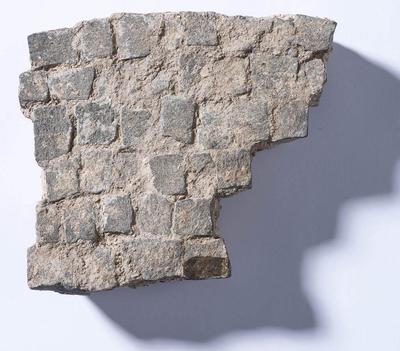Tesserae, mosaic pavement
Country
Italy
See full details
Object detail
Description
Approxmiately 36 mid grey coloured stone squares (tessera) are set in a white to greyish- pink mortar which once would have formed a pavement or floor.
Classification
ARCHAEOLOGY Roman masonry fragment
Production place
Measurements
L102mm x W120mm x D40mm
Media/Materials description
Stone
Mortar
Mortar
History and use
Floor mosaics made of tesserae (small stone cubes) provided a personalised decorative element to buildings. Black tiles on white backgrounds became popular and quickly spread from Ancient Rome. The 4th century AD saw mosaics transform, with hunting and mythological scenes and floral and geometric designs common. Floor mosaics declined with the advent of wall mosaics around the 6th century AD. Designs could be made using a pattern book, and floors could either be laid in place or using pre-made sections in large square frames. The coarsness of the tesserae suggest this is from a plain functional hard wearing floor rather than decorative element. This portion was collected from Rome in 1903.
Associated person
Registration number
H812



